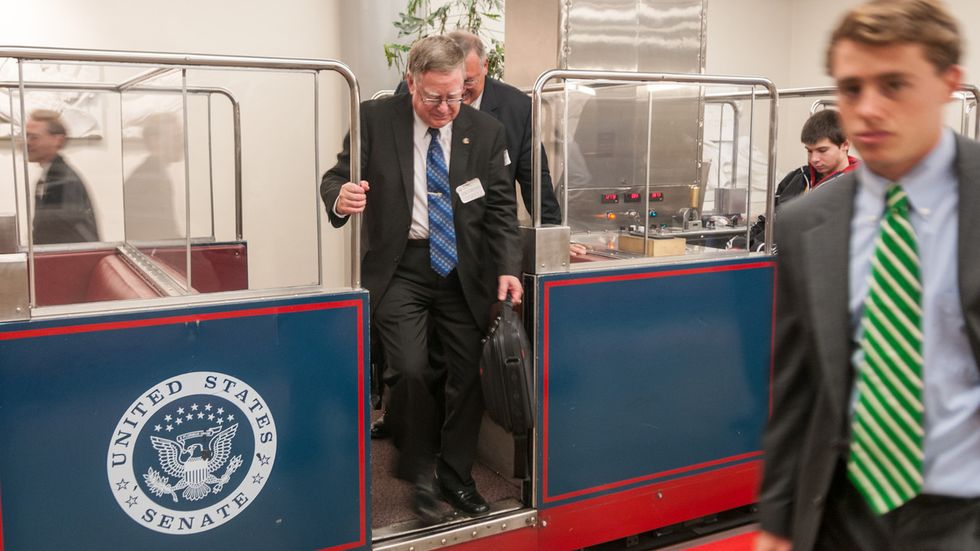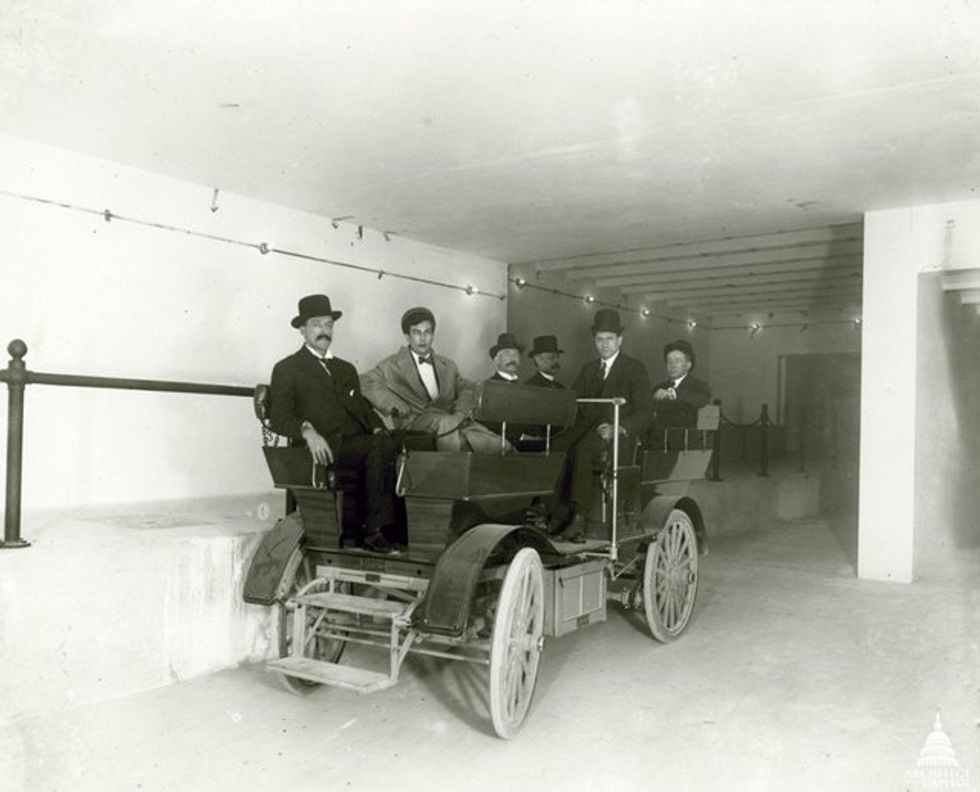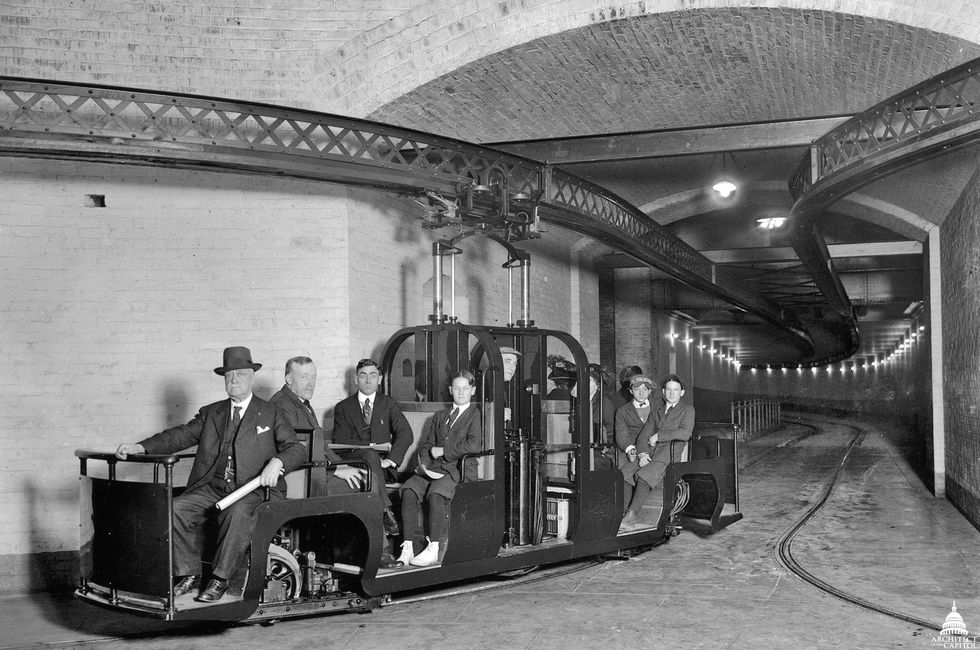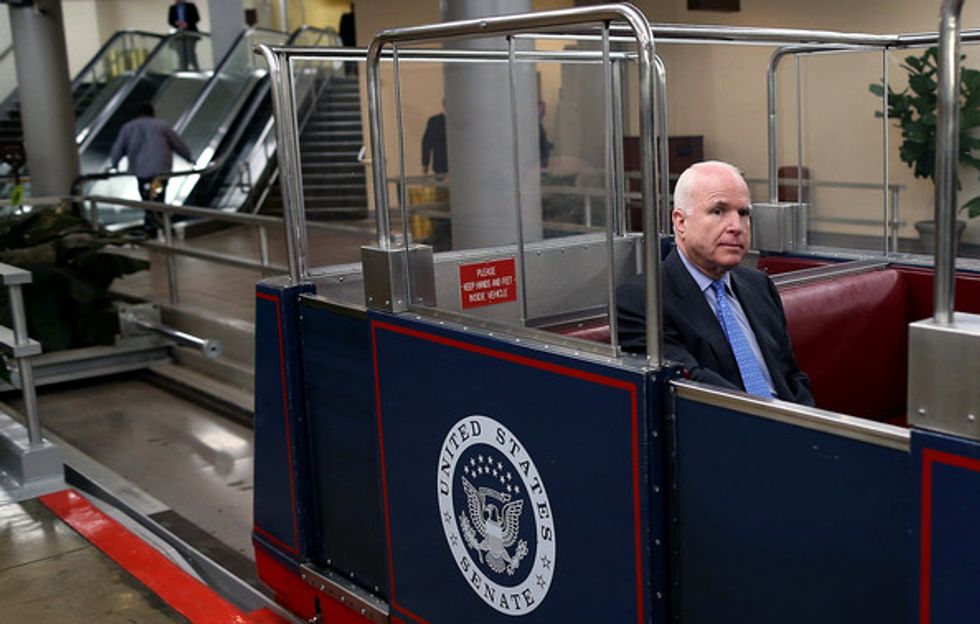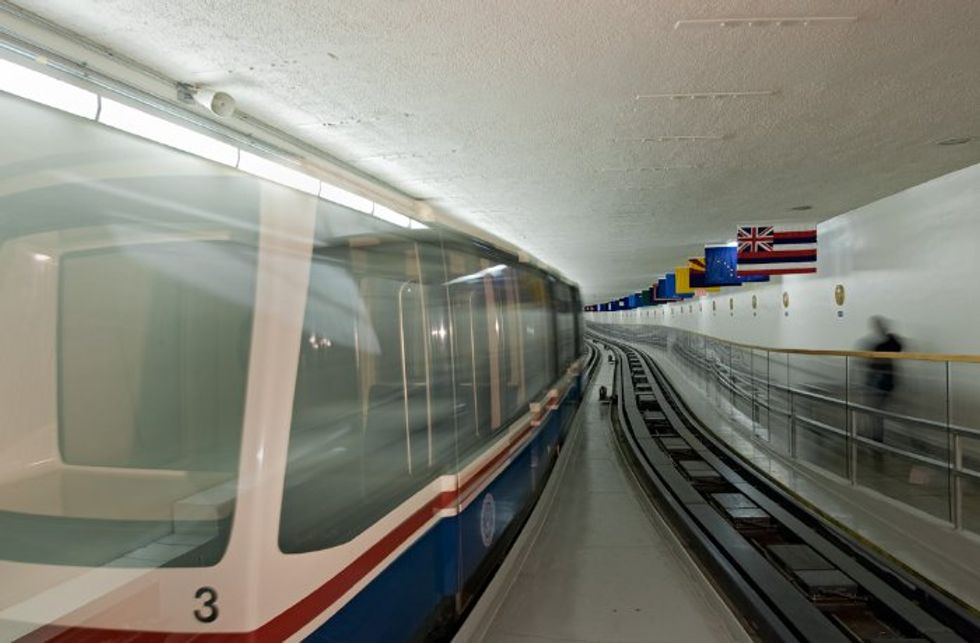The United States Capitol Subway System is a seldom-known and discussed transit system located in the heart of Washington D.C. The exclusive transit system is not open to the public unless you’re a member of Congress or a staffer on Capitol Hill. It’s also one of the world’s shortest, with the portion between the Senate and the Russell Senate Office Building distancing about 1000 feet and taking less than a minute in travel time.
Riding the US Capitol Subway system may be a mundane operating procedure for Capitol Hill employees, but a rather fascinating concept for any outsiders.
The first “trains” on the Russell Subway line, connecting the Capitol Building to the Russell Senate Office building launched in 1901 and were actually battery-powered Studebaker (an Indiana-based American wagon and automobile manufacturer) cars with a capacity of ten passengers at a time. They ran at an average of 12 miles per hour and would run backward for the return trip.
In 1912, standard railroad-style tracks were installed for a double-line electric monorail system, with wooden, wicker-seat trains carrying up to 18 passengers at a time. The trips on this system took 45 seconds.
Historically, Senators summoned the trains by ringing a bell three times, and the front seats were reserved for them. During Senate votes, the trains would shuttle back and forth furiously. Each car made an average of 225 trips per day when Senate was in session.
On the House of Representatives side, a similar subway system connects the basement of the Rayburn House Office Building to the basement of U.S. Capitol Building, although press photography is less encouraged there. As does the Dirksen Hart subway line, the subway tunnel contains flags and seals from the 50 states.
Today, the United States Capitol Subway System serves as the preferred mode of transportation between Congress-related buildings for the President, Congressmen and women, cabinet members, and other employees of the government. It is just one of the many ways that the democracy of this nation moves each day.

